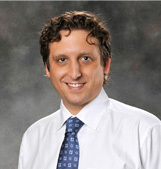RICHMOND, VA--(Marketwired - Feb 7, 2014) - "British bobsleigh pilot John Jackson, who ruptured his Achilles tendon just seven months ago, is healed and ready to compete in the Sochi Winter Olympics thanks to his motivation, his determination, and a revolutionary Achilles repair technique," says Richmond orthopaedic surgeon Jan-Eric Esway, MD. Best described as a "Knotless Percutaneous Achilles Repair," Dr. Esway says the innovative technique involves less surgical dissection, often resulting in less damage to the surrounding soft tissues that help heal the tendon. "This," he adds, "almost always leads to faster recovery times and an earlier return to normal daily activities and sports."
Regarding traditional methods of Achilles repair and what a typical recovery entails, Dr. Esway states, "The most common technique is to make a six-inch incision and repair the tendon using a large suture to hold the two torn ends of the Achilles together. Standard recovery after this surgery takes a long time, and many patients are not able to return to the level of sports competition they enjoyed before their injury.
"There are also inherent flaws in this technique because the Achilles does not have a direct blood supply. The tissue that surrounds the Achilles, called the paratenon, is the main source of blood that delivers healing proteins. Standard repair disrupts the paratenon, therefore limiting the potential for healing. As a result, the Achilles heals with scar tissue, which, in most cases, is a slow process. Recovery often includes wearing a cast for six weeks after surgery, walking in a boot/cast for three to four weeks after that, and undergoing six weeks of physical therapy beginning eight weeks after surgery."
In contrast, Dr. Esway says Jackson's Achilles was repaired with an approach that makes more sense; essentially a combination of two techniques that are commonly used in other parts of the body, like the shoulder:
"Instead of one large incision, multiple small incisions were used. The paratenon and blood supply were left intact so that the Achilles could heal more quickly and with more normal tissue. The torn ends were held together with a stronger suture called FiberTape®, developed by Arthrex Inc. The repair was then made stronger by attaching the FiberTape® suture to the Calcaneus bone with bio-absorbable screws. In theory, it's like holding one's pants up with a belt and suspenders."
In conclusion, Dr. Esway says, "John Jackson's recovery has been amazing, and certainly his athletic, healthy body played an integral role. I always tell my patients that I can do the same surgery on 100 people and they will all have different outcomes because they have different bodies and various levels of motivation to get better. My part is 49%, and their part is 51%.
"Jackson's motivation to compete in the Sochi Olympics definitely played a huge role in his fast recovery, and at the same time, his surgeon used proven technology in a novel way that made his extraordinary recovery possible."
About Jan-Eric Esway, MD
Dr. Esway graduated from Harvard University and earned his medical degree from the University of Pittsburgh's School of Medicine. He then remained at the University of Pittsburgh to complete a 5-year orthopaedic surgical residency. At his Richmond practice, Dr. Esway offers a comprehensive span of orthopaedic surgery and care ranging from ankle sprains and sports medicine, to endoscopic foot surgery and less-invasive Achilles repair. He is available for interview upon request.
For more information about Dr. Esway, visit janeswaymd.com, plus.google.com/116259043829047560444/about, and facebook.com/JanEricEswayMd.
To view the original source of this press release, click here: http://www.janeswaymd.com/blog/uncategorized/revolutionary-achilles-repair-helps-athlete-to-compete-in-sochi-winter-olympics/.
Contact Information:
Dr. Jan-Eric Esway
1115 Boulders Parkway
Suite 100
North Chesterfield, VA 23225
804-320-1339
Rosemont Media
(858) 200-0044
www.rosemontmedia.com
